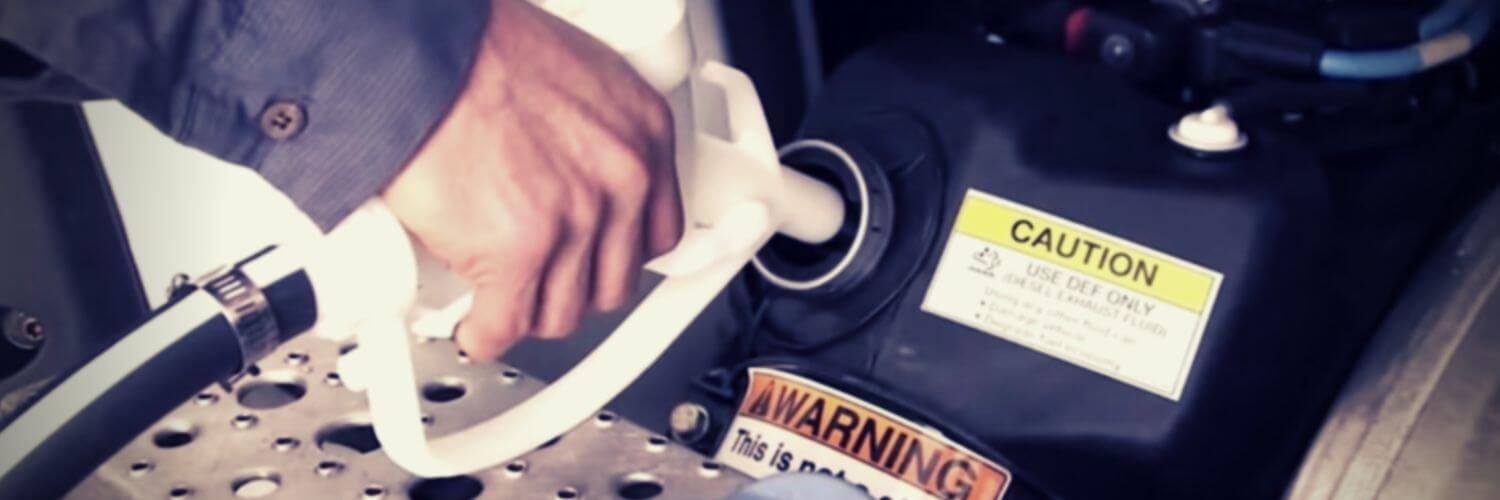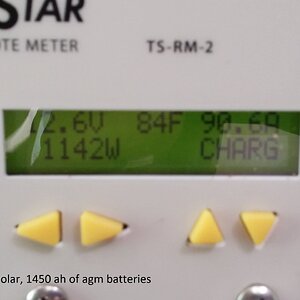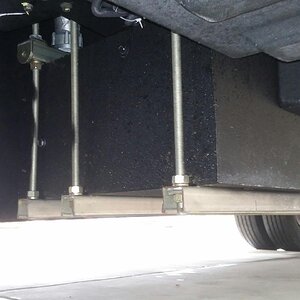Neal
Administrator
- Joined
- Jul 27, 2019
- Messages
- 13,871
- Location
- Midlothian, VA
- RV Year
- 2017
- RV Make
- Newmar
- RV Model
- Ventana 4037
- RV Length
- 40' 10"
- Chassis
- Freightliner XCR
- Engine
- Cummins 400 HP
- TOW/TOAD
- 2017 Chevy Colorado
- Fulltimer
- No
A lot of chatter on the web of late regarding DEF. While I don't know the details or causes I have a concern on DEF quality based on how many maintain DEF in their RV's. A lot of people like to keep their DEF tanks full, some may let it go down one indicator value such as 1 dot out of 4. Camp Freightliner pushes the rule of thumb to let it go down to two dots (half tank) prior to filling. I'm nearing the end of a long trip and I recently let my DEF get a little lower than normal, intentionally. I wanted to go lower but chickened out.
The concern many have is crystallization of the area above your DEF level. My concern and the reason I let my DEF get down to 1/2 tank prior to filling is DEF concentration, or quality. DEF has a lifespan, it does not last forever, from what I understand. If the DEF is not completely cycled out of your tank then over time you are effectively diluting your DEF by adding new to old, constantly. DEF should effectively be at a 100% concentration, in layman's terms but if you are only adding a 1/2 tank of new to 1/2 tank of old each time, what is your net effective concentration?
If I could I would drain my DEF tank annually and fill with fresh DEF. I haven't looked at what it would take to do this but my concern is growing that over time we are just reducing the quality of DEF in our RV's. My understanding from FL is you can actually run out of DEF and still travel 1,000 miles to get to a location to get DEF. I don't want to be the one to test this nor have I heard of anyone that has but the point is the system is designed to let you completely run out and not immediately de-rate you. I need to work harder on letting my DEF level get lower so I can ensure a higher concentration of quality of DEF is in my system.
The other option is to TEST your DEF. I actually own a refractometer, it's in my pegboard bay, I have yet to use it. When I get back to storage I should test it and see what it reads. I invite others to test your DEF as well and reply with your findings and share your practice of DEF management as described above and let's see what kind of statistics on DEF quality we can come up with.
The concern many have is crystallization of the area above your DEF level. My concern and the reason I let my DEF get down to 1/2 tank prior to filling is DEF concentration, or quality. DEF has a lifespan, it does not last forever, from what I understand. If the DEF is not completely cycled out of your tank then over time you are effectively diluting your DEF by adding new to old, constantly. DEF should effectively be at a 100% concentration, in layman's terms but if you are only adding a 1/2 tank of new to 1/2 tank of old each time, what is your net effective concentration?
If I could I would drain my DEF tank annually and fill with fresh DEF. I haven't looked at what it would take to do this but my concern is growing that over time we are just reducing the quality of DEF in our RV's. My understanding from FL is you can actually run out of DEF and still travel 1,000 miles to get to a location to get DEF. I don't want to be the one to test this nor have I heard of anyone that has but the point is the system is designed to let you completely run out and not immediately de-rate you. I need to work harder on letting my DEF level get lower so I can ensure a higher concentration of quality of DEF is in my system.
The other option is to TEST your DEF. I actually own a refractometer, it's in my pegboard bay, I have yet to use it. When I get back to storage I should test it and see what it reads. I invite others to test your DEF as well and reply with your findings and share your practice of DEF management as described above and let's see what kind of statistics on DEF quality we can come up with.
DEF Refractometer for Measuring Diesel Exhaust Fluid Concentration of Diesel Engines: Amazon.com: Industrial & Scientific
DEF Refractometer for Measuring Diesel Exhaust Fluid Concentration of Diesel Engines: Amazon.com: Industrial & Scientific
www.amazon.com













